Potatoes are rich, healthy, and delicious. Growing your own crop at home is exciting as the potatoes roughly take 90 to 120 days to mature.
Potatoes can be harvested throughout the growth cycle. The root vegetable can be harvested in as little as 10 weeks. These are known as baby potatoes or spuds. Full potatoes typically take 90 – 120 days until harvest.
There are a lot of important steps to growing potatoes in your back garden. The soil needs to be fertilized and cultivated, the correct potato variety needs to be selected and the ground needs to be well-drained and regularly cultivated.
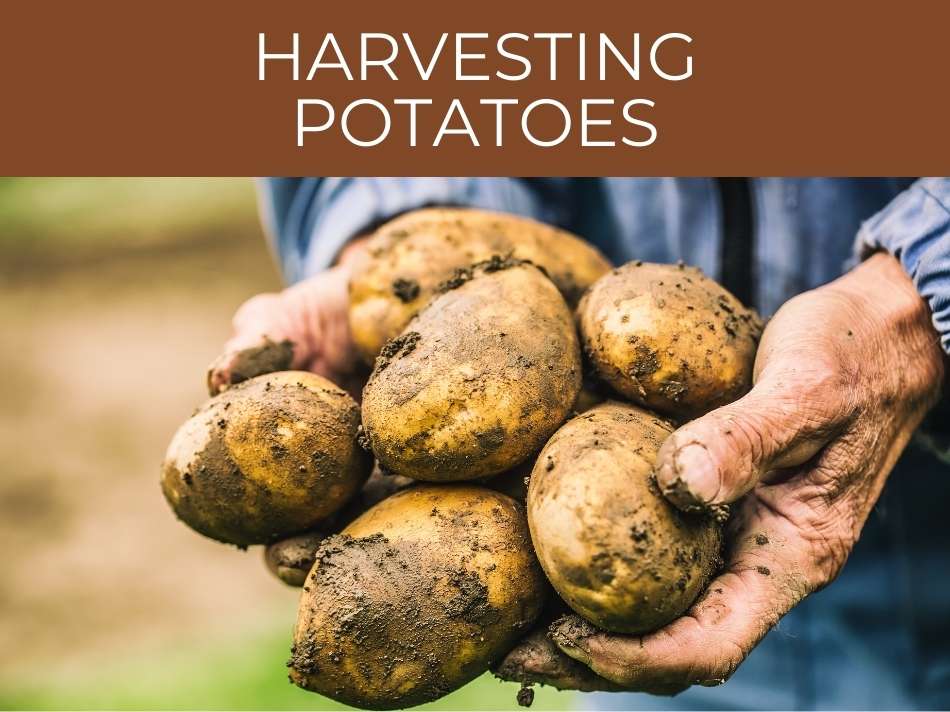
Harvesting potatoes
There are a few steps that you need to take into consideration in order to ensure that you are harvesting the potatoes that you actually want.
For example, you should carefully consider steps required to ensure that you have a healthy crop at harvesting.
Harvesting potatoes may happen over several months. New potatoes can be harvested 2 – 4 weeks after flowers appear, whereas late potatoes are harvested after the plant dies back. Harvest potatoes by gently digging up the tubers using a garden fork or shovel, or by hand.
Harvesting time is also greatly affected by location, as some potatoes are planted at the very beginning of the season, while potatoes in other regions may only be planted mid season to late in the season.
Harvesting time is influenced by a variety of factors such as the potato variety, the gardeners’ choice, and the date that the tubers were planted.
Potatoes, a major food crop, produces more food on less land at a much faster pace than other major food crops.
Check out the guide to growing baby potatoes.
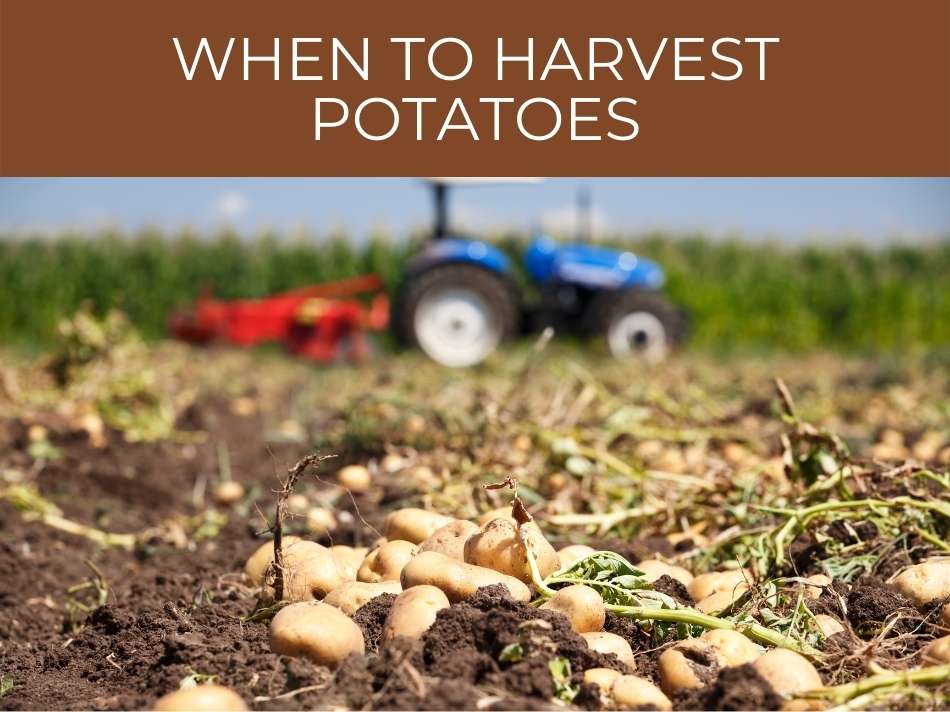
When to harvest potatoes
After carefully tending to your potatoes, including taking care of them, making sure to hill the soil around the potatoes, cultivating, and fertilizing the soil, and now you want to know when they will be ready.
Two factors may indicate whether your potatoes are ready to be harvested: the weather and the plant itself.
Mature potatoes can be harvested when the top of the plant has died. This is a clear indication that the potatoes are ready to be harvested. For new potatoes, those that are roughly 1 – 2 inches in size, harvesting may be done 2 – 4 weeks after the plant flowers.
Also take into consideration the temperature of the air and the temperature of the soil before you commence harvesting.
Potatoes are able to handle a light frost but need to be dug up before the first big frost.
In addition, if you reside in an area that has a cool fall season but no frost, the temperature of the soil should ideally be 45°F before harvesting.
Typically, it will take about 10 weeks from the date the potatoes are planted to be able to pull potatoes that are ready to eat.
See our complete guide on how to grow your own potatoes.
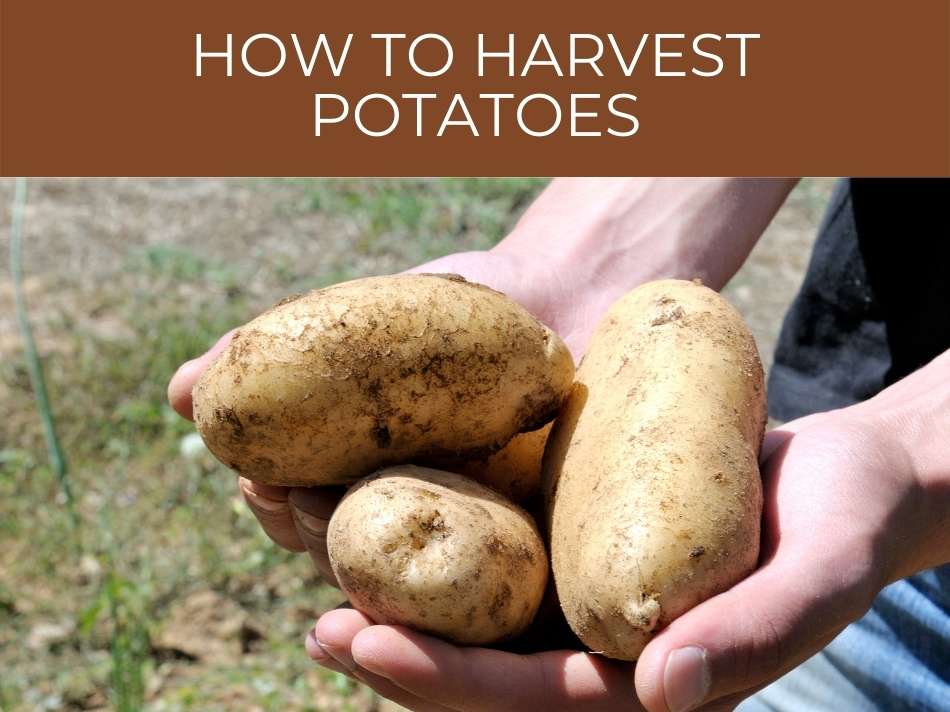
How to harvest potatoes
We have covered when to plant potatoes and when to harvest potatoes. Now let’s have a look at how to harvest potatoes.
Potatoes are harvested by using a shovel or a spading fork. Start by driving the fork into the outside edges of the potato plant and gently lift the soil to reveal the potatoes. Proceed to remove the potatoes before gently placing the plant back into the soil.
An important factor to keep in mind is that the plant should be watered after the potatoes have been removed.
It’s always best to dig up a test hill first before digging it up for winter storage. Keep an eye on the skin as it should be thick and attached quite firmly to the flesh of the potato.
It’s also best to choose a dry warm day to harvest potatoes.
See how deep to plant your potatoes.
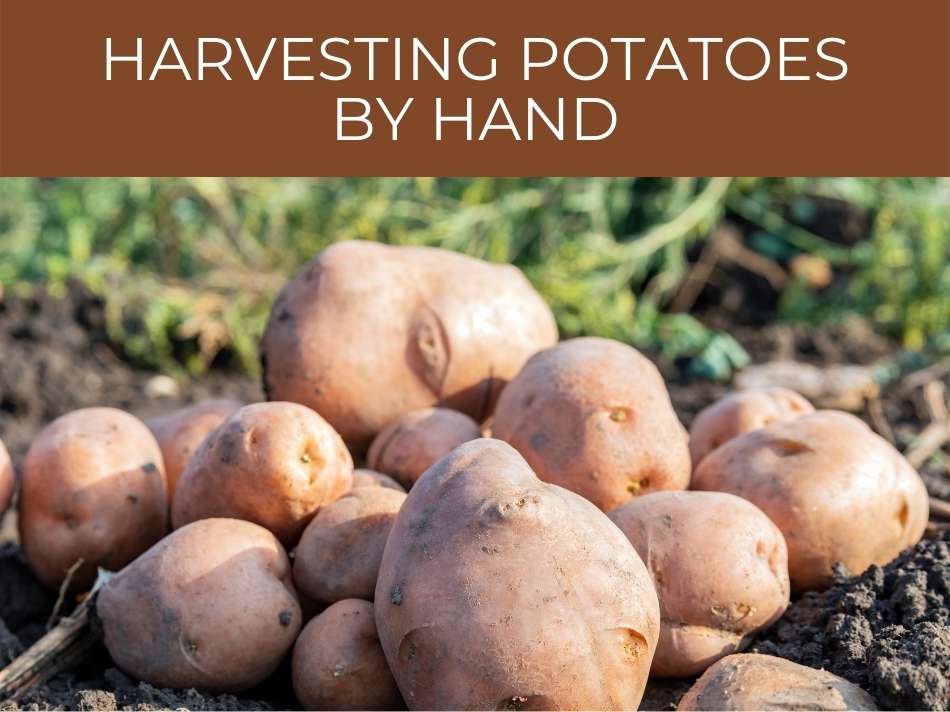
Harvesting potatoes by hand
There are several tools that can help you to harvest your potatoes. However, under certain conditions, you should be able to harvest your potatoes by hand.
Keep in mind, if you decide to harvest potatoes with your hands, you should always wear protective gear such as garden gloves.
Potatoes can be harvested by hand if the soil is shallow & loose enough. Due to the possible damage caused by using tools, harvesting by hand is preferable, since it prevents damage to the skin & internal part of the potato.
Using garden tools such as shovels or spades may end up causing damage to the surface and sometimes the inner part of the potato.
This may be an internal leakage where the enzymes of the potato mix with substrates, which ultimately results in a black bruised spot.
Find out how long potatoes can last.
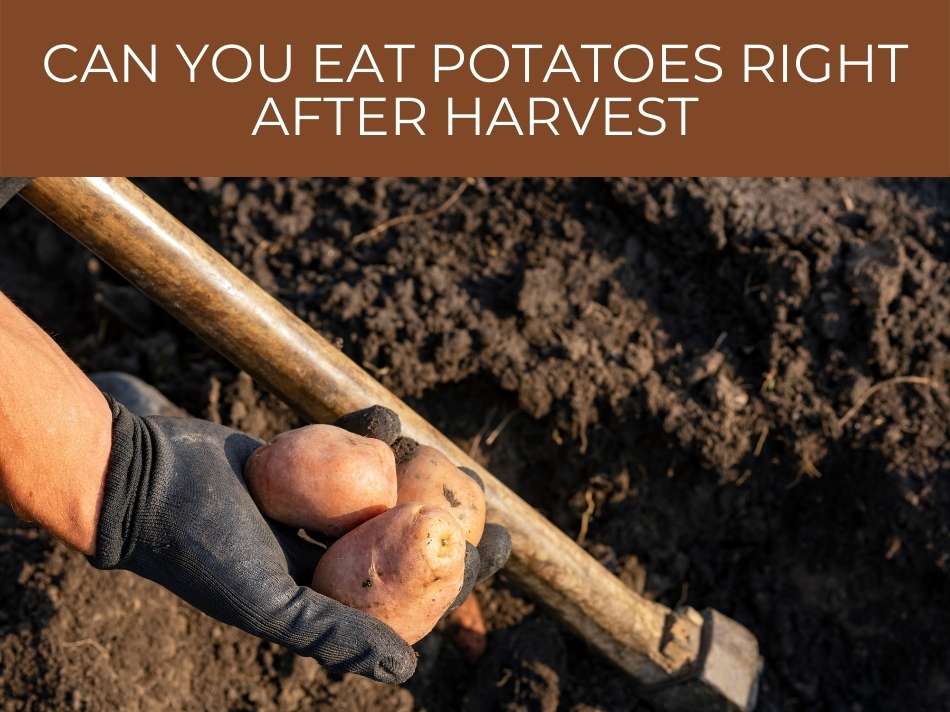
Can you eat potatoes right after harvest
When harvesting potatoes, it is important to understand that different varieties of potatoes will be harvested at different times during the season.
New potatoes, which are basically potato spuds, can and should be eaten at least within a few days after harvest.
Fresh potatoes can be eaten straight out of the ground. It is advised to cure the potatoes prior to long term storage first, but if the potatoes are consumed immediately, this may not be necessary. Curing potatoes in a cool, humid area helps prolong storage.
Potatoes that will go into long term storage may need to be cured first.
Fresh potatoes that will be consumed immediately may need to be brushed and scrubbed first to remove excess dirt.
See our complete guide for when to harvest potatoes.
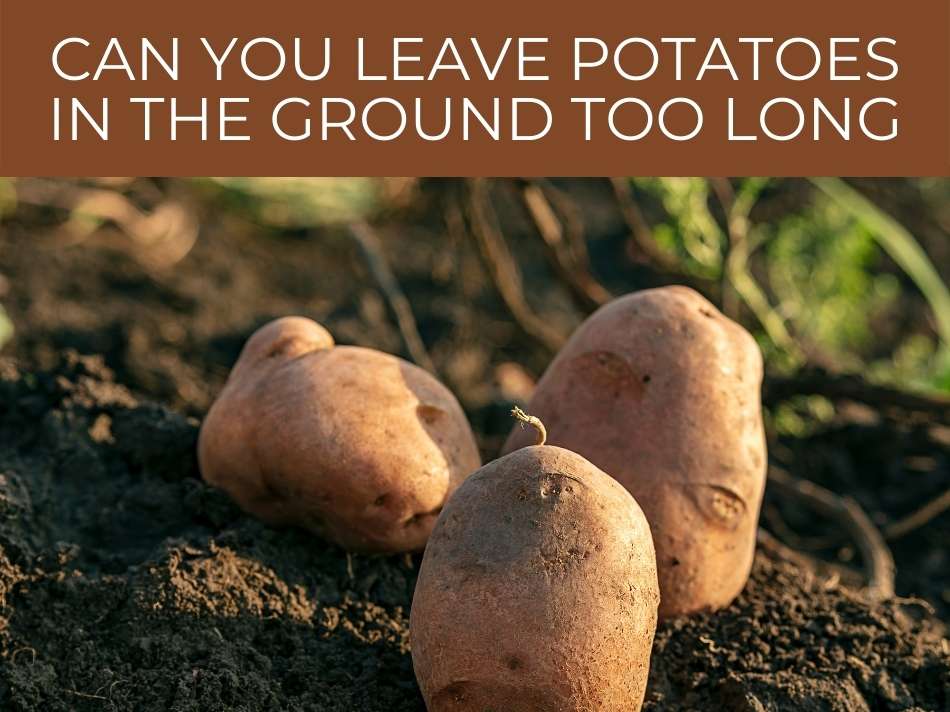
Can you leave potatoes in the ground too long
Some gardeners may leave their potatoes in the ground as a means of long-term storage, but this is not recommended.
Leaving the potatoes in the ground for too long may cause damage due to frost.
Leaving potatoes in the ground for too long may cause the potatoes to rot or begin to sprout. Sprouting may occur if soil remains moist and temperatures remain above 50 F. Rotting can occur if the upper layer of soil is wet & soggy.
The plant dying is an indication that the potatoes are ready to be harvested and removed from the ground.
It’s possible to store the potatoes in the ground after the plant dies, but only for a period of two weeks and no more.
This will harden the skin on the potato and cure it.
Learn how to grow baby potatoes.
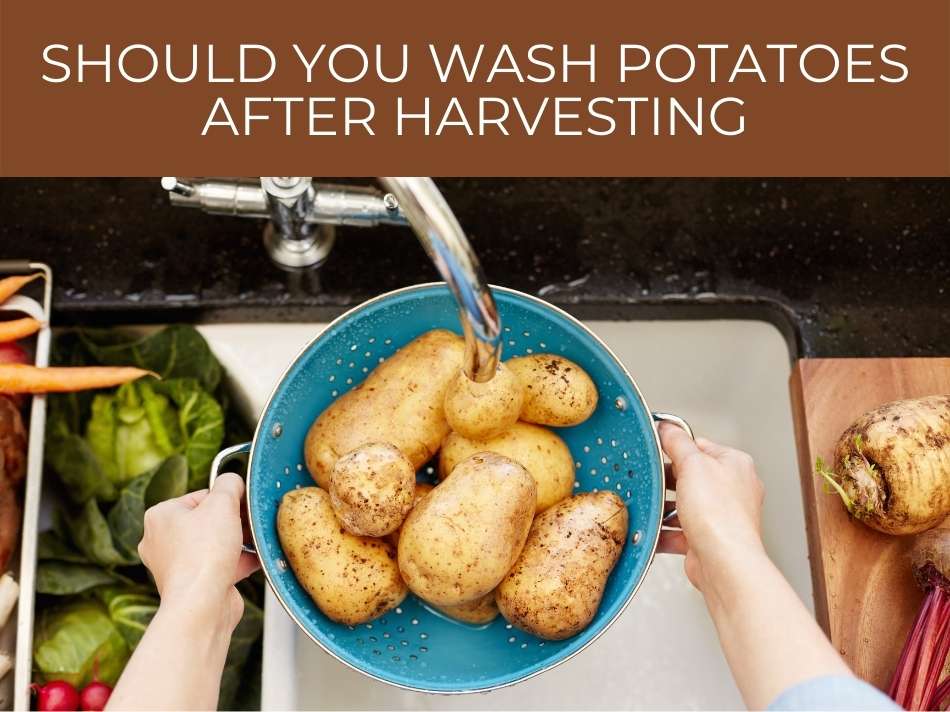
Should you wash potatoes after harvesting
While previously mentioned that it was perfectly fine to wash potatoes if you intend on consuming them immediately, this may not be the case all the time.
Potatoes that have been harvested do not need to be washed unless they are consumed immediately. If the potatoes are placed in storage, it is best to wait to wash the potatoes until just before they are prepared for consumption.
Washing potatoes before they are placed in storage will most certainly shorten the shelf life of the potato.
In addition, this may encourage mold to form once the potatoes go into storage.
Find out if a potato is a fruit or a vegetable.
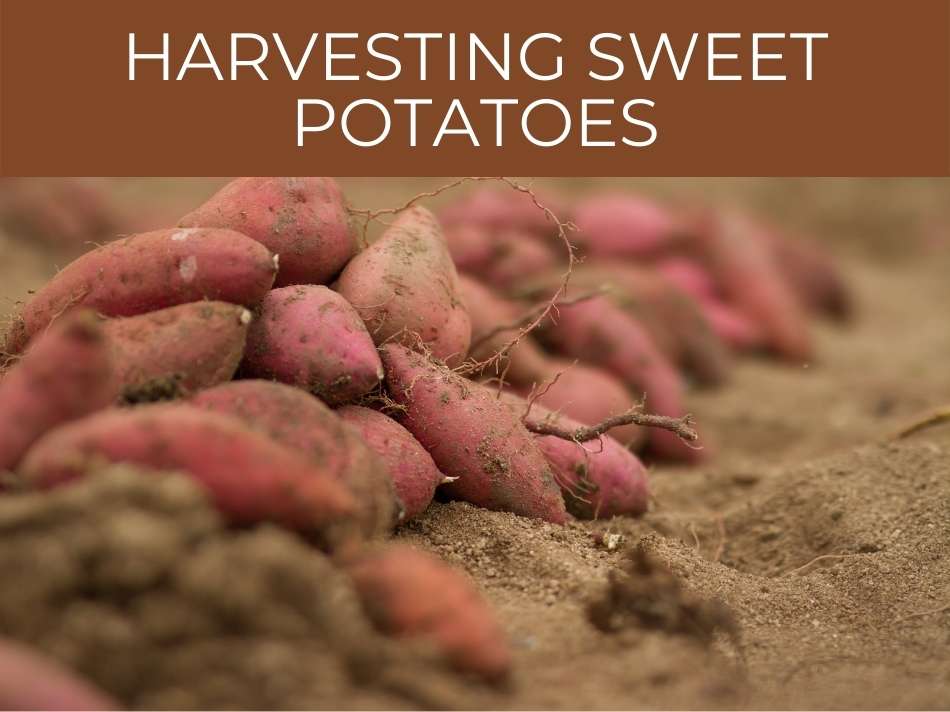
Harvesting sweet potatoes
The sweet potato, a healthier alternative to the potato, is harvested in much the same way that potatoes are harvested. They are delicious when eaten directly after harvesting.
Sweet potatoes may be harvested as soon as the sweet potato is large enough. Sweet potatoes are typically harvested in late summer, when the ends of the vine & the leaves of the plant start to turn yellow–roughly 90 – 120 days after planting.
You can start to harvest the sweet potatoes by cutting the vines.
Then, loosen the soil around all the plants about 18 inches around and roughly four to six inches deep into the ground.
See our complete guide on how to grow sweet potatoes.
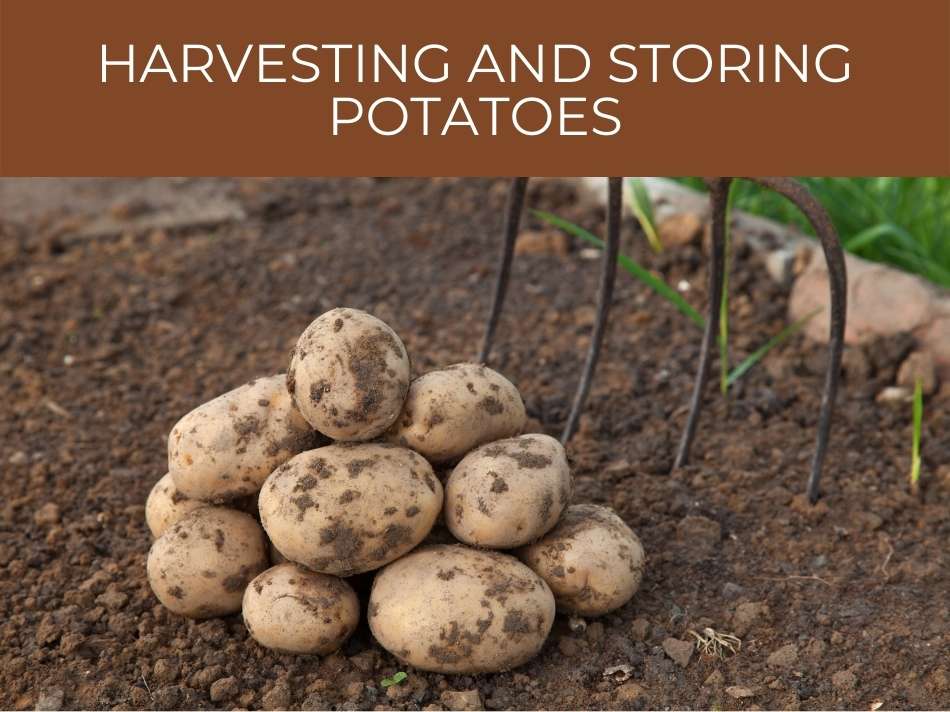
Harvesting and storing potatoes
Knowing how to store potatoes is key to preventing decay and loss of moisture.
In addition, it prolongs the shelf life of the potatoes and prevents wastage.
After harvesting, potatoes should be stored in a cool, humid, dark place at a temperature of 42 – 50°F; warmer temperatures encourage sprouting. The humidity should be relatively high at 80 – 90%. Exposure to light encourages greening.
If you plan to store the potatoes for longer, like over the winter, the potatoes need to be moved after two weeks.
The potatoes should then be stored in a much cooler (42°F to 50°F) and dark room. There should be relatively high humidity and ventilation.
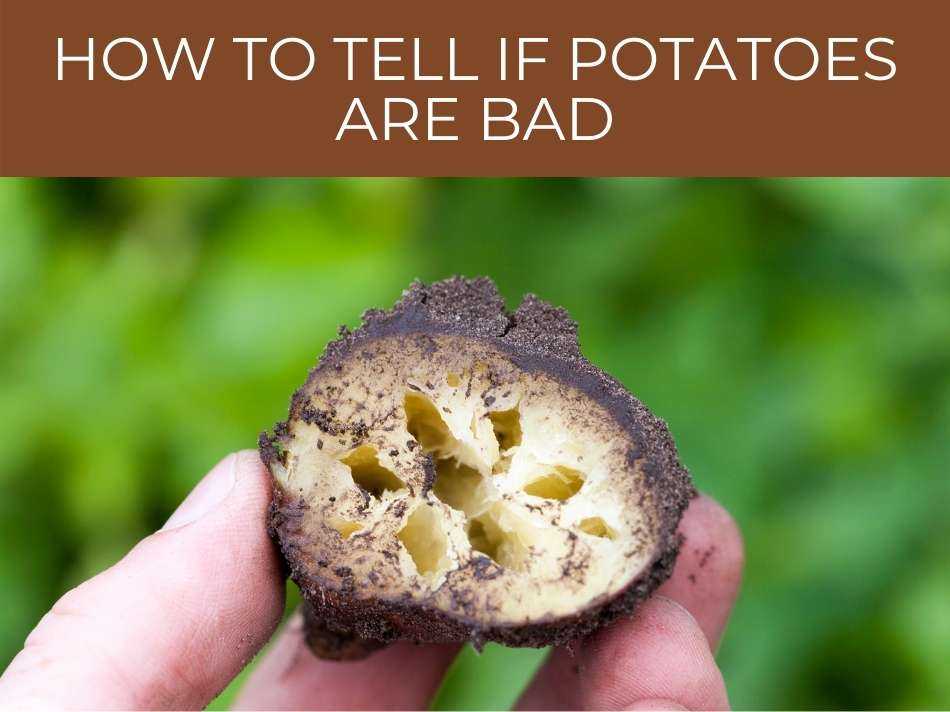
How to tell if potatoes are bad
There are a few hallmark signs that your potatoes have gone bad.
Spoiled potatoes may have a moldy or musty odor. In addition, bruises, blemishes, and black spots are a clear indication of spoilage. In addition, avoid potatoes with skin that is soft, spongy, or wrinkly. Ideally, potatoes should have no blemishes, and should be firm.
Ideally, if the potatoes are still fresh, they should have a very firm skin on the surface.
Keep in mind that mold cannot simply be cut off as other parts of the potato may be infected as well.

